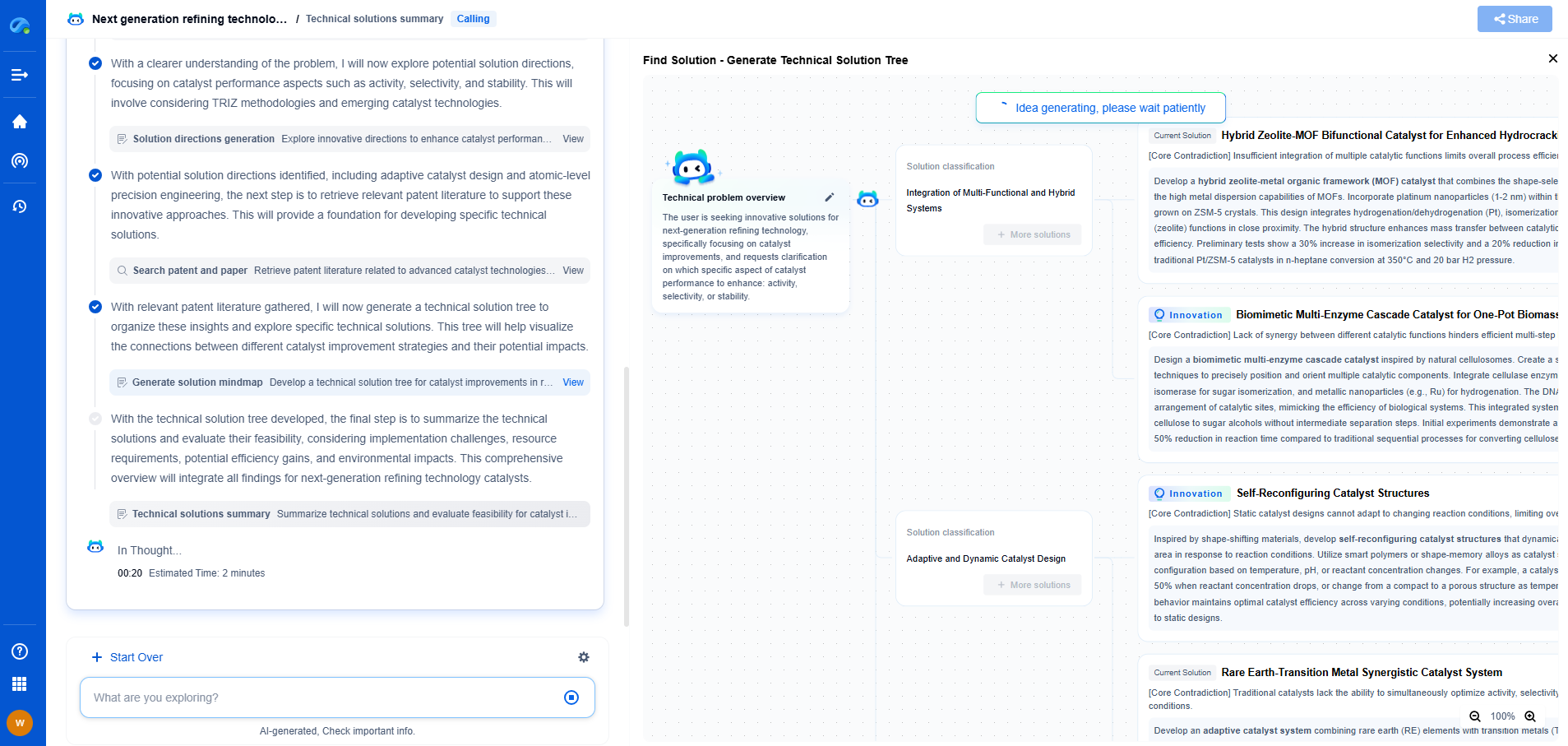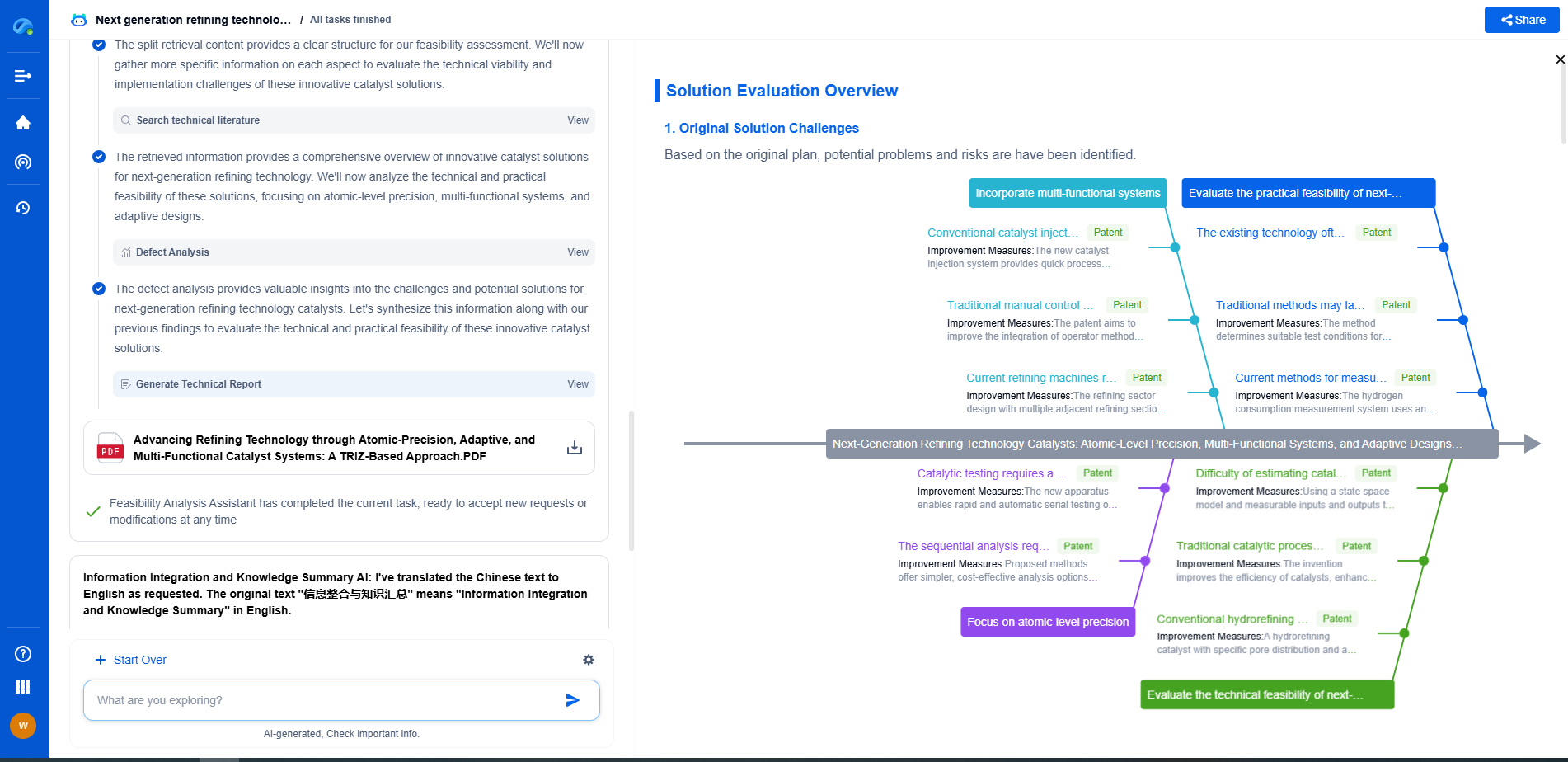What Is Latency in Machine Learning Deployment?
JUN 26, 2025 |
Machine learning has become an integral part of modern technology, helping businesses automate processes, make predictions, and personalize user experiences. However, the success of a machine learning model in a real-world application often hinges on more than just accuracy. Latency, or the time taken for a model to produce an output after a request, plays a crucial role in determining the effectiveness and user satisfaction of machine learning applications.
Defining Latency in Machine Learning
In the context of machine learning deployment, latency refers to the time delay between an input and the corresponding output generated by a model. This metric is particularly crucial in applications requiring real-time processing, such as autonomous vehicles, fraud detection systems, or recommendation engines. High latency in these scenarios can lead to slower performance, decreased user satisfaction, and even safety risks.
Factors Contributing to Latency
Several factors can contribute to latency in machine learning deployment. Understanding these can help in identifying and mitigating latency issues:
1. Model Complexity: More complex models, such as deep neural networks, often require more computational resources, which can increase latency. While these models tend to provide higher accuracy, they might not be suitable for applications requiring low latency.
2. Hardware Limitations: The hardware on which a machine learning model runs can significantly impact latency. Faster processors and ample memory can reduce latency, whereas outdated or insufficient hardware can increase it.
3. Data Transfer: The time taken to transfer data between different parts of a system or over a network can contribute to overall latency. This is particularly relevant in distributed systems or cloud-based deployments where data might need to travel long distances.
4. Batch Size: Processing inputs in batches rather than individually can improve throughput but may increase latency for individual requests. The choice of batch size can thus be a trade-off between latency and computational efficiency.
Mitigating Latency Issues
To ensure that machine learning applications perform efficiently, especially in time-sensitive scenarios, it is essential to address latency effectively. Here are some strategies to mitigate latency:
1. Optimize Model Architecture: Simplifying the model architecture or using model compression techniques can reduce computational demands, thereby lowering latency. Techniques such as pruning, quantization, or using lighter models like MobileNet can be effective.
2. Enhance Hardware: Upgrading to more powerful hardware or using hardware accelerators like GPUs or TPUs can significantly reduce latency. Cloud providers often offer specialized instances optimized for machine learning workloads.
3. Edge Computing: Deploying models closer to the data source, such as on edge devices, can minimize data transfer times and reduce latency. This approach is particularly beneficial for applications requiring real-time processing.
4. Asynchronous Processing: Implementing asynchronous processing can help manage latency by allowing a system to continue operating while waiting for a model to return results. This approach can improve perceived performance in user-facing applications.
Evaluating Latency in Machine Learning Deployment
When deploying machine learning models, it is crucial to evaluate latency as a part of performance assessment. This involves measuring the time taken from input to output under different conditions and identifying any bottlenecks. Tools and frameworks such as Apache JMeter, Locust, or custom scripts can help simulate workloads and gather latency metrics.
Conclusion
Latency is a critical factor in the deployment of machine learning models, especially for applications requiring real-time decision-making. By understanding and addressing the various factors contributing to latency, developers can ensure that their applications remain both efficient and user-friendly. Balancing model complexity, hardware capabilities, and deployment strategies are key to achieving optimal performance in real-world scenarios.
Unleash the Full Potential of AI Innovation with Patsnap Eureka
The frontier of machine learning evolves faster than ever—from foundation models and neuromorphic computing to edge AI and self-supervised learning. Whether you're exploring novel architectures, optimizing inference at scale, or tracking patent landscapes in generative AI, staying ahead demands more than human bandwidth.
Patsnap Eureka, our intelligent AI assistant built for R&D professionals in high-tech sectors, empowers you with real-time expert-level analysis, technology roadmap exploration, and strategic mapping of core patents—all within a seamless, user-friendly interface.
👉 Try Patsnap Eureka today to accelerate your journey from ML ideas to IP assets—request a personalized demo or activate your trial now.
- R&D
- Intellectual Property
- Life Sciences
- Materials
- Tech Scout
- Unparalleled Data Quality
- Higher Quality Content
- 60% Fewer Hallucinations
Browse by: Latest US Patents, China's latest patents, Technical Efficacy Thesaurus, Application Domain, Technology Topic, Popular Technical Reports.
© 2025 PatSnap. All rights reserved.Legal|Privacy policy|Modern Slavery Act Transparency Statement|Sitemap|About US| Contact US: help@patsnap.com

